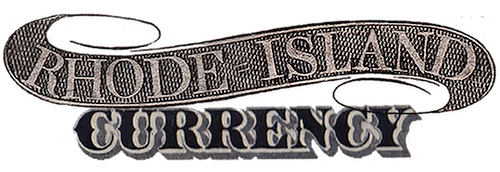Merchants Bank, Providence
This institution was established in February of 1818 with a capital of $300,000. William Richmond II, was appointed first president and Joseph Wheelock, cashier. Its first board of directors were: G. Taft, William Richmond II, Andrew Taylor, Peleg Rhodes, Truman Beckwith, Samuel N. Richmond, Randolph Chandler, Stephen H. Smith, Josiah B. Woods, Charles Potter, George S. Rathbone, Charles L. Bowler and Nathan Tingley.
It acted as the Rhode Island affiliate of the Suffolk Bank of Mutual Redemption, which held and redeemed the bank notes of the day, thereby maintaining New England’s commercial stability.
According to one record, “The location of the bank was at 12, Union Building, afterward at 139 South Main street in 1855, at 12 Westminster street in 1857.”
In 1855, the bank constructed a building at 14 Westminster Street. The structure cost over $90,000. It was remodeled extensively in 1880. One reference notes:
“Remarkable as it may seem today, this now-rare brownstone building was the city’s tallest for more than two decades after its construction. In creating it, architects Clifton Hall and Alpheus Morse vertically stretched the limits of the Italian Renaissance palace form about as far as visually and technically possible in the mid-nineteenth century. Not surprisingly, this was Providence’s first building retrofitted with an elevator, in the early 1870s.” — William McKenzie Woodward, PPS/AIAri Guide to Providence Architecture. Providence: Providence Preservation Society, 2003.
It was renamed the Merchants National Bank on August 24, 1865. As a national institution, Merchants issued $18,650,100 in bank notes. 128 of these are known today, as recorded by the National Bank Note Census.
Merchants was acquired by the Providence National Bank on May 15, 1926.
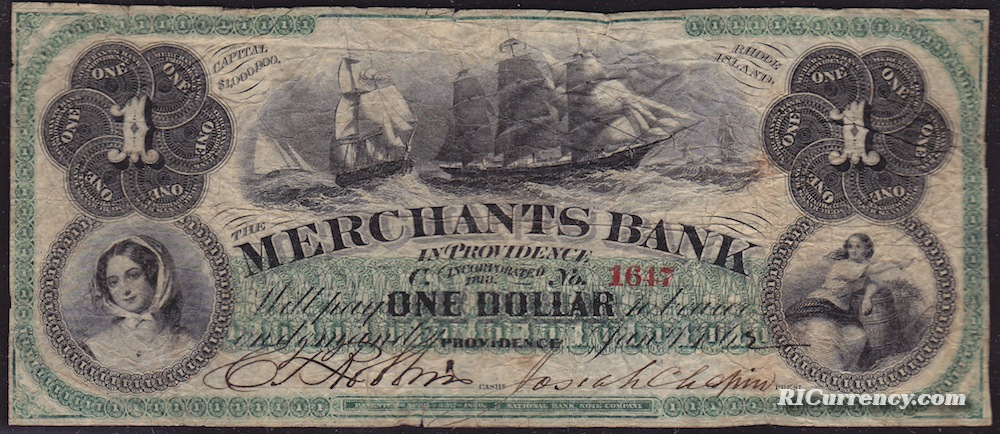
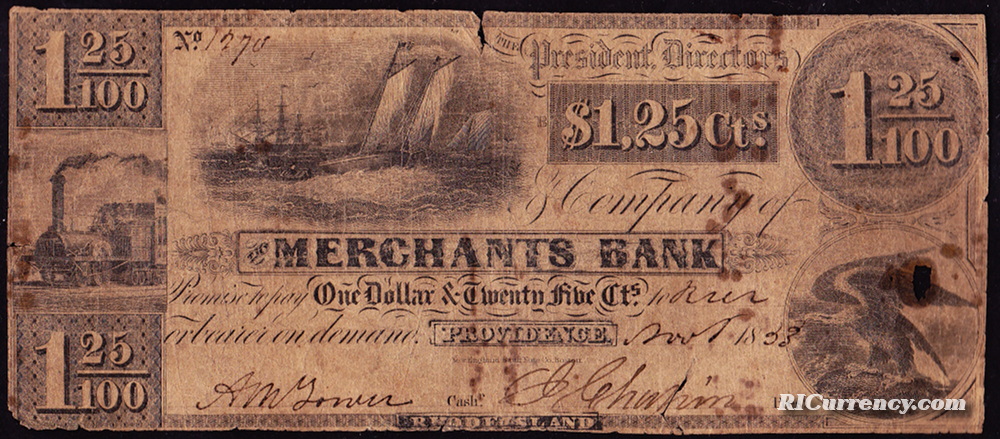
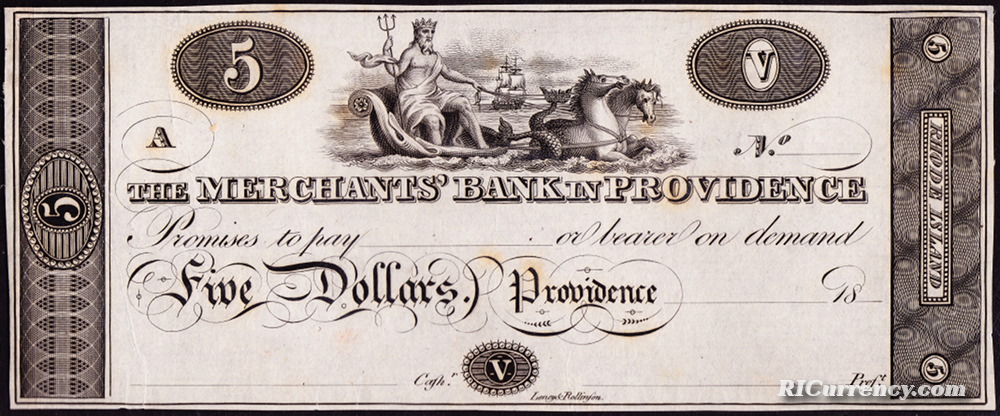

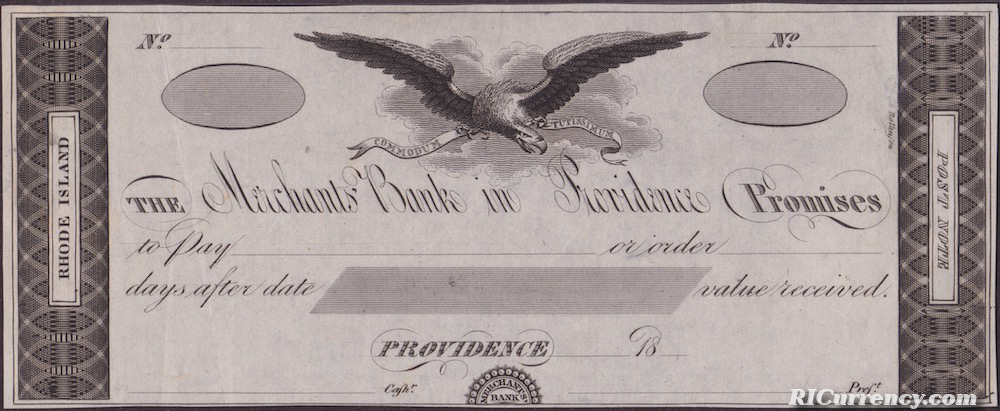
1810s-20s Post Note Proof. Durand 1678, Haxby RI-355 G60P, Bowers W-RI-1080-_-G230
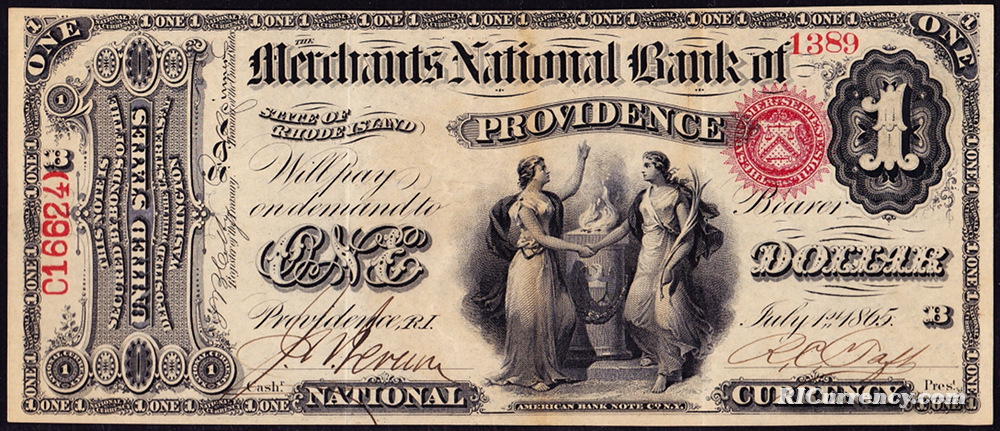
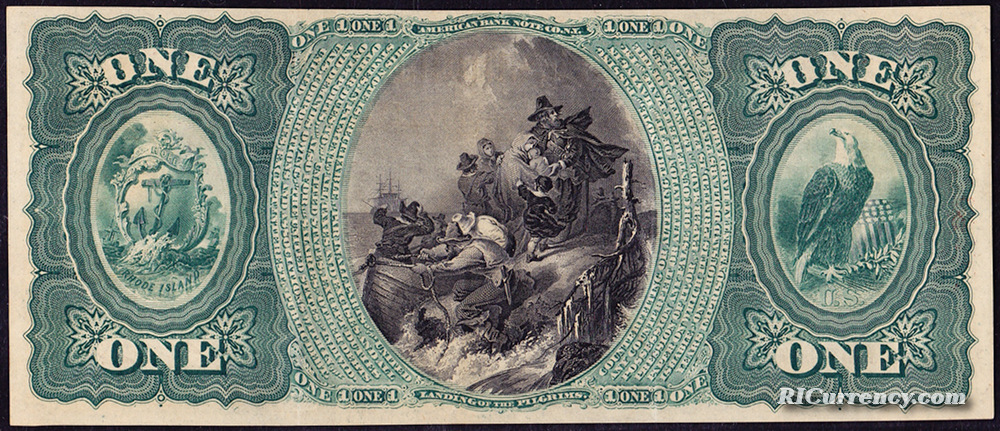


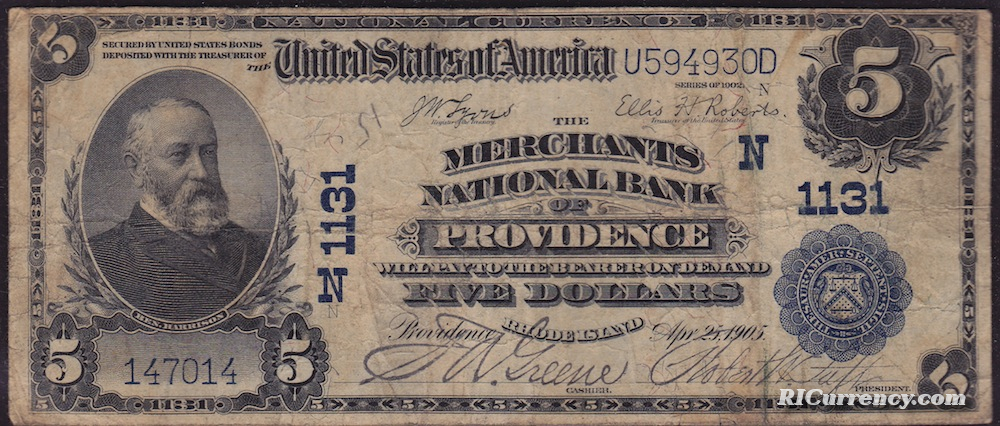
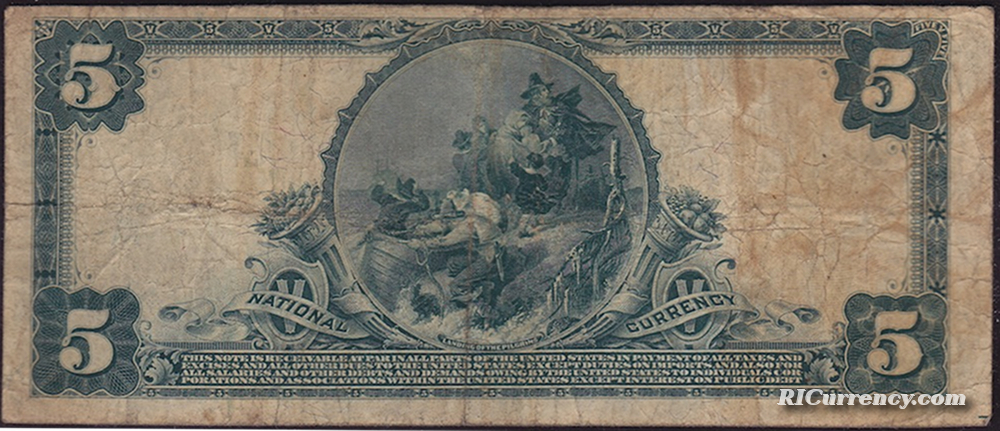


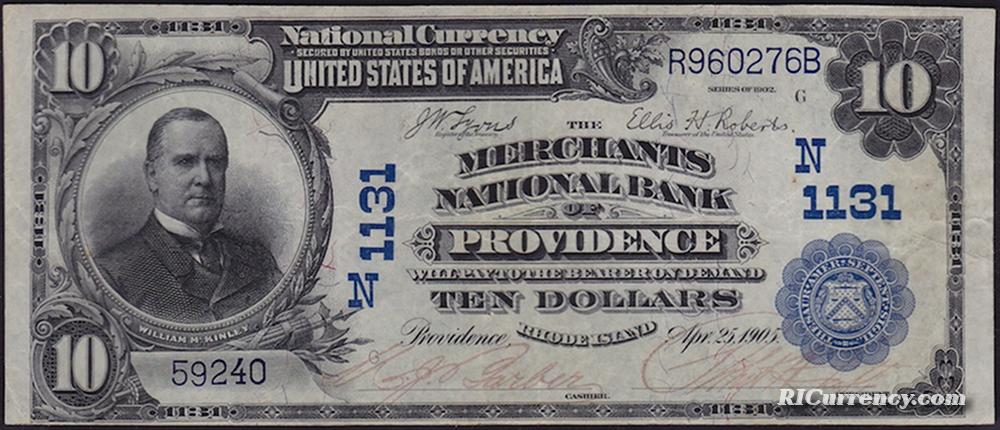
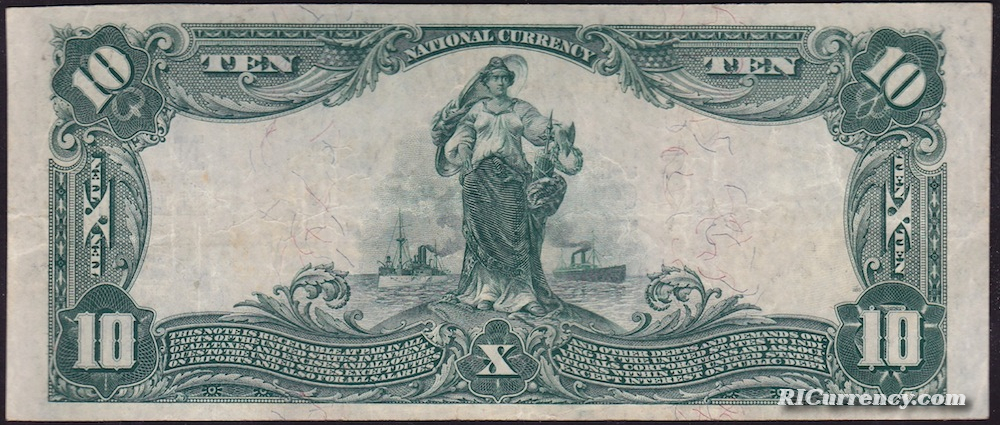
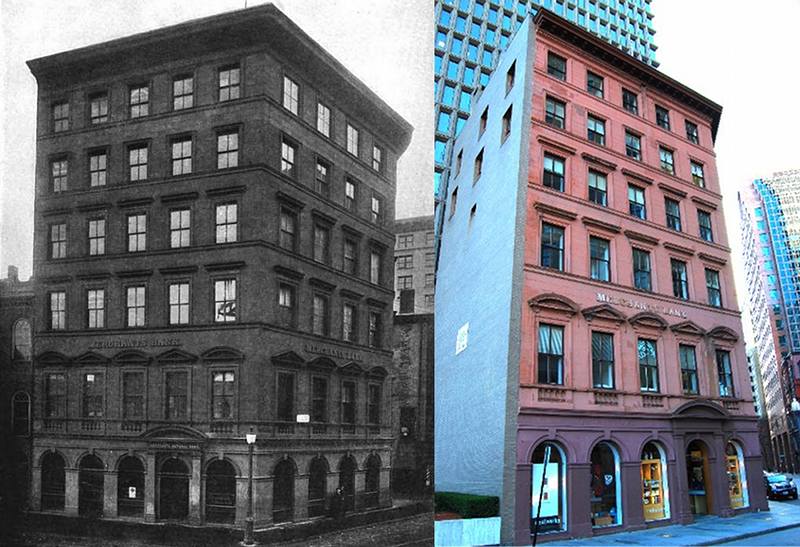
The Merchants Bank building on Westminster Street was the tallest building in Providence for two decades after its construction in 1855. A vintage photograph and the structure today.
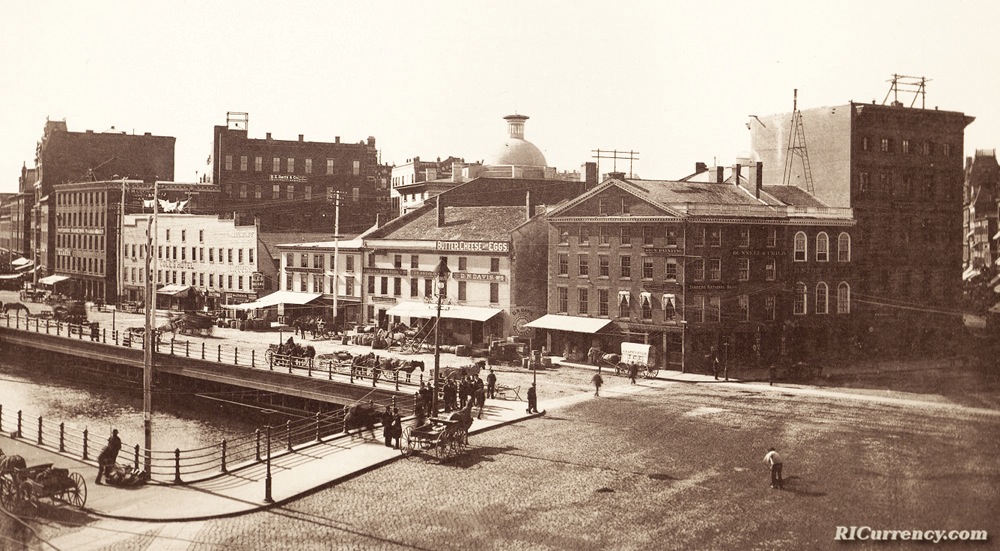
Designed by architects Clifton Hall and Alpheus Morse, the Merchants Bank Building (far right) once stood at the center of Providence’s financial district.
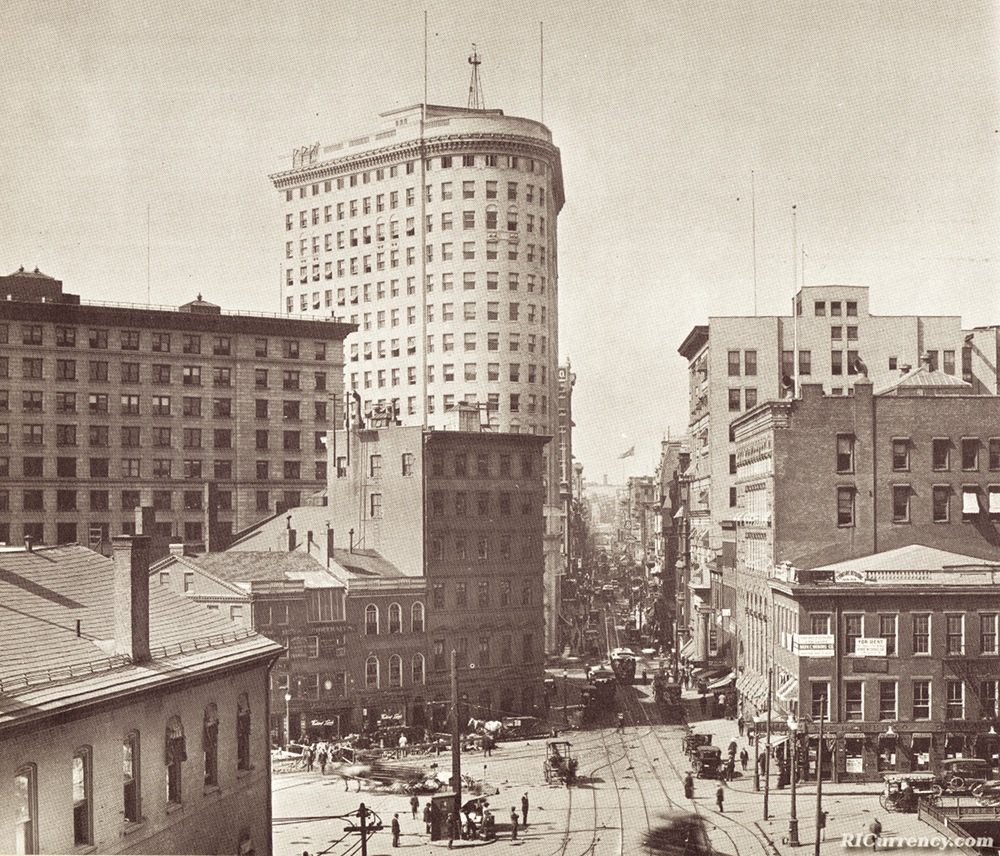
Merchants National Bank with the newly-built Turk’s Head Building in the background, circa 1915.
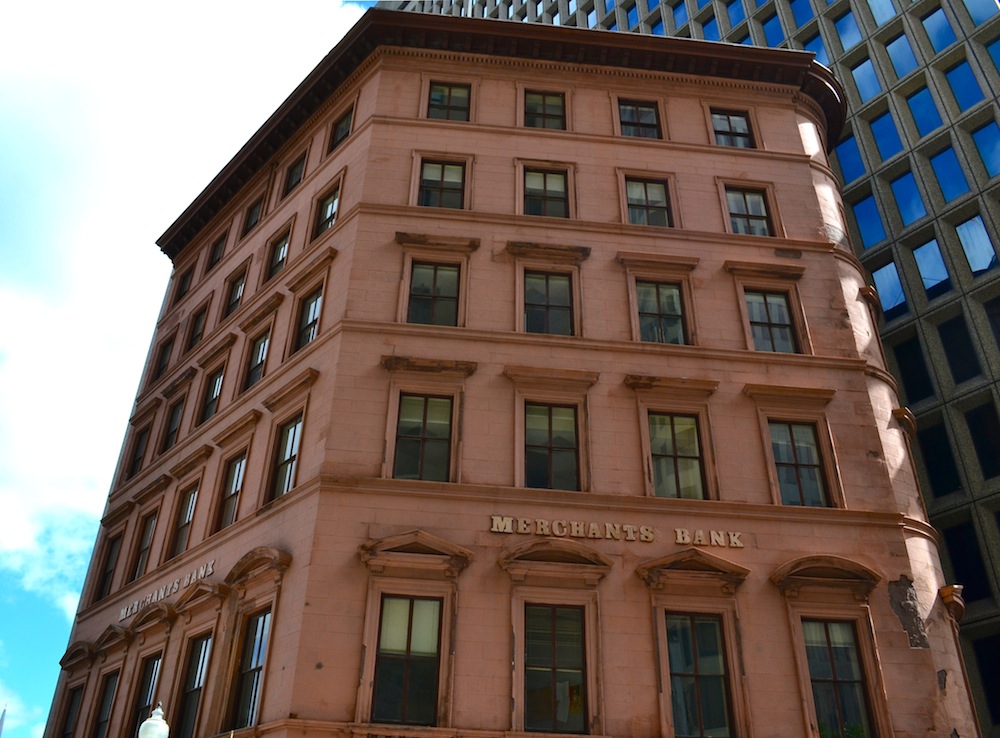
The Merchants Bank building on Westminster Street.

From a distance, the structure is dwarfed by newer buildings.

Detail of the façade.
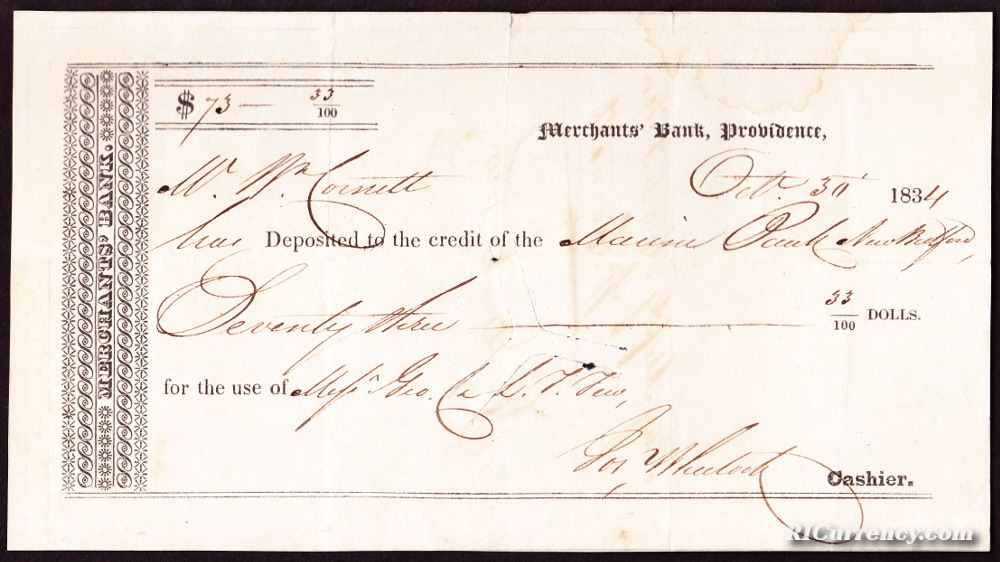
Receipt for monies deposited to the credit of the Marine Bank of New Bedford, Massachusetts. Dated October 30, 1834.
